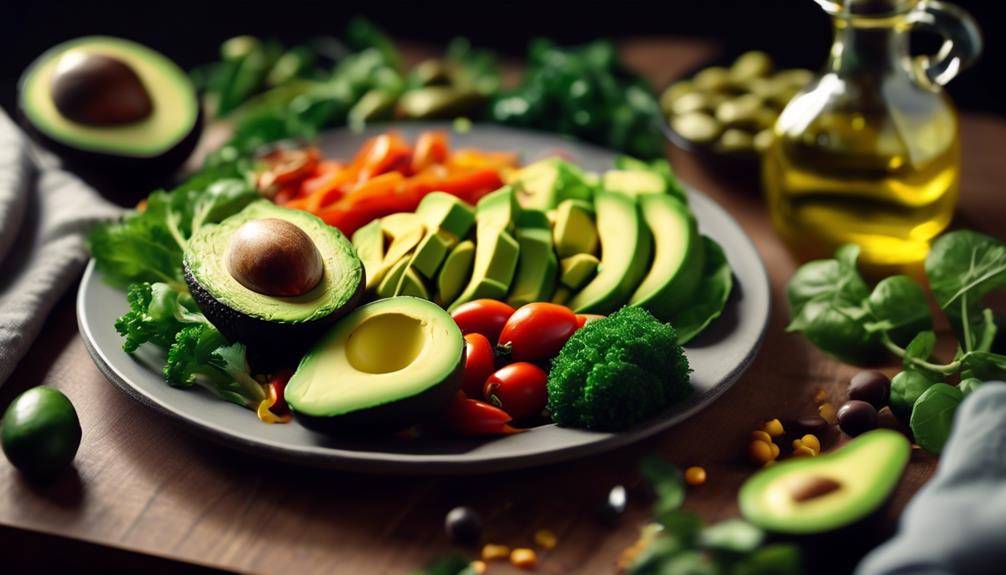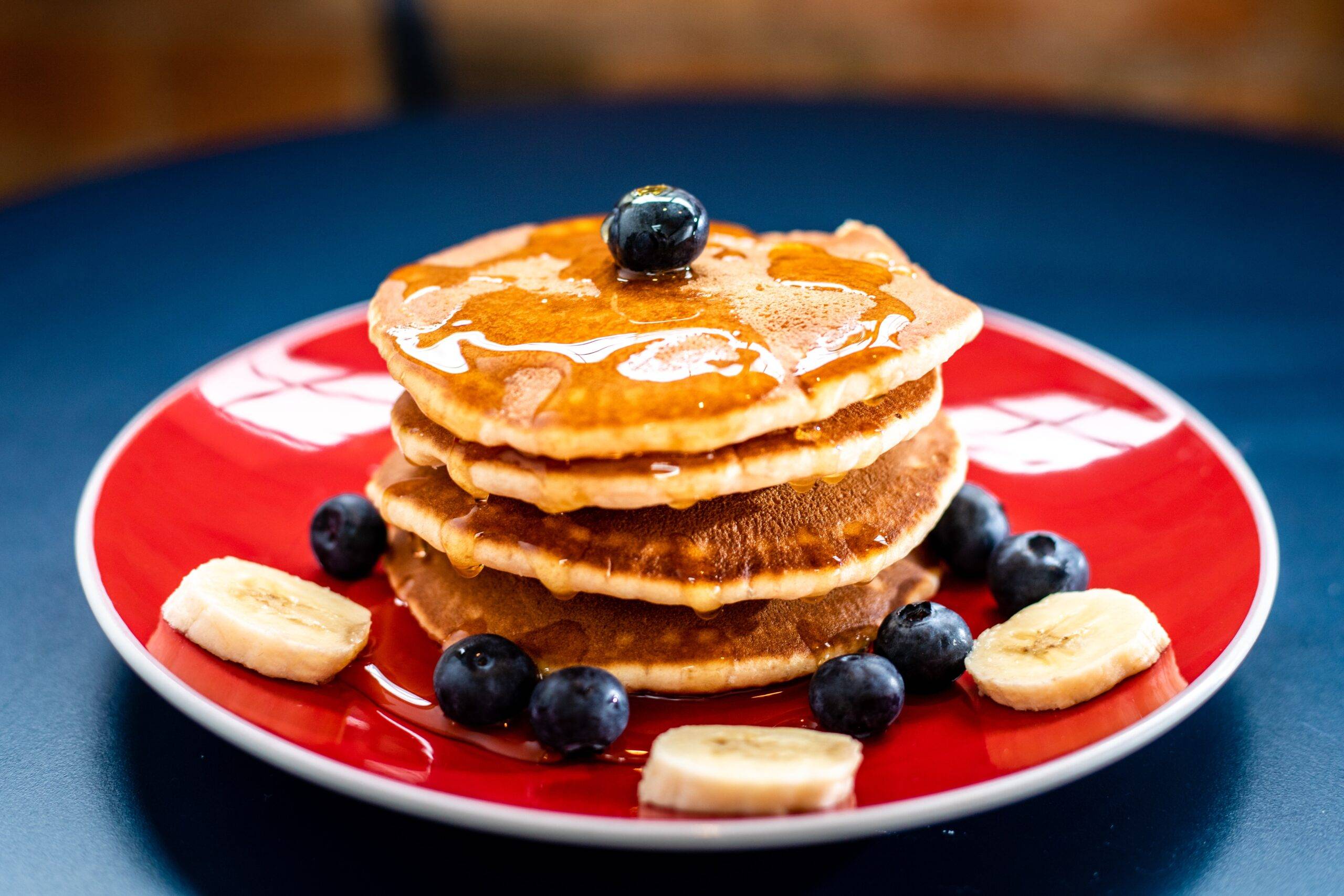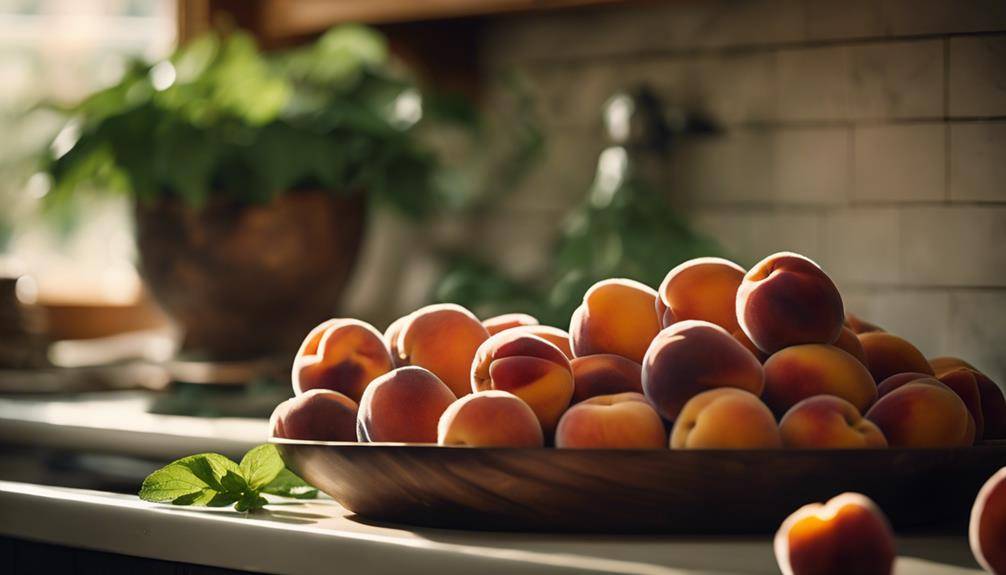Popular American Breakfast Recipes From 1950s

Popular American Breakfast Recipes From 1950s; Step back in time and savor the nostalgic flavors of the 1950s, as you embark on a culinary journey through popular American breakfast recipes. Like a time machine for your taste buds, these dishes transport you to an era filled with simplicity and comfort, where the aroma of sizzling bacon and the sizzle of scrambled eggs on a hot griddle enveloped every kitchen. But that’s just the beginning.
From fluffy pancakes to indulgent French toast and mouthwatering cinnamon rolls, the breakfast table of the 1950s was a treasure trove of delicious possibilities. So, grab a seat at the table and let’s uncover the secrets behind these cherished morning delights, as we explore the flavors that have stood the test of time.
Classic Pancakes
If you’re looking for a breakfast classic that is both simple and satisfying, you can’t go wrong with classic pancakes. Pancakes have been a beloved staple in American breakfasts for decades, and for good reason. They are easy to make and can be customized to suit your taste preferences.
When it comes to cooking techniques, making pancakes is relatively straightforward. The batter consists of a few basic ingredients such as flour, eggs, milk, and baking powder. After combining these ingredients, you simply pour the batter onto a hot griddle or frying pan and cook until golden brown on both sides. Flipping the pancake requires a bit of finesse, but with practice, you’ll become a pro.
One of the great things about pancakes is the countless flavor variations you can explore. From classic buttermilk pancakes to more adventurous options like blueberry or chocolate chip, there is a pancake flavor for everyone. You can even experiment with adding spices like cinnamon or nutmeg to enhance the taste. And let’s not forget about the toppings! Maple syrup is a timeless choice, but you can also try fresh fruit, whipped cream, or even a dollop of Nutella.
Scrambled Eggs
When it comes to cooking scrambled eggs, there are various techniques you can employ to achieve different results. From the classic method of beating eggs in a bowl and cooking them on low heat, to the more modern technique of adding cream or milk for a creamier texture, each approach offers its own unique flavor and texture. By experimenting with different cooking techniques and flavor variations, you can elevate a simple dish like scrambled eggs into a delicious and versatile breakfast option.
Cooking Techniques
To achieve perfectly fluffy scrambled eggs, it is essential to master the art of proper cooking techniques. Scrambled eggs are a staple in American breakfasts and can be enjoyed in various ways. The cooking techniques used for scrambled eggs have evolved over the years, with recipe adaptations to suit different tastes and preferences.
One popular cooking technique for scrambled eggs is the low and slow method. This involves cooking the eggs over low heat, stirring gently and frequently to create soft and creamy curds. Another technique is to add a splash of milk or cream to the beaten eggs before cooking. This helps to make the eggs fluffier and adds a touch of richness to the dish.
Furthermore, recipe adaptations have introduced the use of additional ingredients, such as cheese, vegetables, and herbs, to enhance the flavor and texture of scrambled eggs. These additions can be mixed into the beaten eggs before cooking or sprinkled on top during the cooking process.
Mastering the art of cooking techniques and exploring recipe adaptations allows for endless possibilities when it comes to enjoying scrambled eggs for breakfast. Whether you prefer them plain and simple or loaded with delicious ingredients, the key is to cook them with care and attention to achieve that perfect fluffy texture.
Flavor Variations
After mastering the art of cooking techniques for scrambled eggs, it’s time to explore the delicious flavor variations that can elevate your breakfast experience. Get ready to take your taste buds on a journey with these flavor pairings and modern twists:
- Savory Delights:
- Add a sprinkle of freshly grated Parmesan cheese for a rich and nutty flavor that complements the creamy eggs perfectly.
- Experiment with different herbs and spices like chives, dill, or smoked paprika to add a burst of freshness and complexity.
- Sweet Surprises:
- Incorporate a touch of maple syrup or honey for a hint of sweetness that pairs beautifully with the fluffy eggs.
- Try mixing in some diced fruits like apples or berries to infuse your scrambled eggs with a delightful fruity twist.
These flavor variations will awaken your palate and transform your scrambled eggs into a breakfast masterpiece. So go ahead, get creative, and enjoy a truly satisfying start to your day!
Bacon and Eggs
Bacon and eggs remain a classic and beloved breakfast combination in 1950s American cuisine. This iconic duo was a staple in many American households, providing a hearty and satisfying start to the day. One popular way to enjoy bacon and eggs during this time was in the form of a breakfast sandwich.
The breakfast sandwich, consisting of crispy bacon, a perfectly cooked egg, and sometimes a slice of cheese, was a convenient and delicious way to enjoy this classic combination. The bacon added a smoky and savory flavor, while the eggs provided a rich and creamy texture. Sandwiched between two slices of bread or a toasted English muffin, this breakfast option was both filling and portable, making it a favorite for busy individuals.
The popularity of bacon and eggs during the 1950s can be attributed to several factors. Firstly, bacon was readily available and relatively inexpensive, making it a common ingredient in many American households. Secondly, eggs were a versatile and nutritious food item, providing essential proteins and vitamins. Lastly, the simplicity and deliciousness of the combination made it appealing to a wide range of people.
Today, bacon and eggs continue to be a popular breakfast choice, although they have undergone some variations and adaptations over the years. From the classic breakfast sandwich to gourmet twists with avocado or aioli, the possibilities are endless. Regardless of the decade, bacon and eggs will always hold a special place in American breakfast culture, reminding us of the comforting and familiar flavors of a bygone era.
French Toast
Now let’s talk about the different points to consider when it comes to French Toast. First, we’ll explore the classic recipe variations that were popular in the 1950s. From the basic recipe to more decadent options, there’s something for everyone’s taste buds. Next, we’ll reveal the secret ingredient secrets that can take your French Toast to the next level. Finally, we’ll discuss serving suggestions, including the best toppings and accompaniments to enhance your breakfast experience. So, let’s get ready to indulge in a delicious trip down memory lane with these 1950s French Toast recipes.
Classic Recipe Variations
For a delightful twist on the classic French toast recipe, explore a variety of creative and mouthwatering variations. By experimenting with different ingredients and cooking techniques, you can elevate this breakfast favorite to a whole new level. Here are two sub-lists of classic recipe variations that are sure to evoke an emotional response in your taste buds:
- Sweet Variations:
- Cinnamon Sugar French Toast: Sprinkle a generous amount of cinnamon and sugar on the bread before dipping it in the egg mixture. The result is a sweet and fragrant French toast that will satisfy your craving for something indulgent.
- Stuffed French Toast: Cut a slit in each piece of bread and fill it with your favorite sweet filling, such as cream cheese, Nutella, or fruit preserves. This ooey-gooey treat is perfect for a special occasion or a lazy weekend brunch.
- Savory Variations:
- Bacon and Cheese French Toast: Cook crispy bacon and sprinkle it on top of the bread before dipping it in the egg mixture. Add a layer of your favorite cheese between two slices of bread for a savory twist.
- Herb-infused French Toast: Add a mixture of fresh herbs, such as thyme, rosemary, and parsley, to the egg mixture. This adds a burst of flavor and transforms the classic French toast into a sophisticated breakfast option.
Whether you prefer the sweet or savory side, these classic recipe variations will take your French toast game to the next level. Get creative in the kitchen and enjoy the delicious results!
Secret Ingredient Secrets
To enhance the flavor and texture of your French toast, consider incorporating a secret ingredient that will elevate this classic breakfast dish to new heights. When it comes to secret ingredient ideas for French toast, there are plenty of options that can add a delicious twist to your morning meal.
One popular choice is adding a splash of vanilla extract to the egg mixture, which imparts a warm and aromatic flavor to the toast. Another secret ingredient idea is to sprinkle a pinch of cinnamon or nutmeg into the batter, giving your French toast a cozy and comforting taste. For those looking for a breakfast recipe makeover, consider using almond milk or coconut milk instead of regular milk, providing a subtle nutty or tropical flavor to your French toast. These secret ingredient ideas will surely transform your ordinary French toast into a breakfast masterpiece.
Serving Suggestions
Enhance your French toast experience with a variety of mouthwatering serving suggestions. By exploring different serving styles and plating techniques, you can elevate this classic breakfast dish to a whole new level. Here are some ideas to inspire you:
- Toppings:
- Fresh fruits: Add a burst of color and natural sweetness with sliced strawberries, blueberries, or bananas.
- Whipped cream: A dollop of fluffy whipped cream adds a creamy and indulgent touch to your French toast.
- Accompaniments:
- Maple syrup: Drizzle warm maple syrup over your French toast for a traditional and comforting flavor.
- Savory twist: Serve your French toast with crispy bacon or scrambled eggs for a satisfying savory breakfast option.
Experimenting with different toppings and accompaniments allows you to personalize your French toast experience and create a memorable breakfast moment. So go ahead, get creative, and enjoy the delicious possibilities!
Sausage and Biscuits
Preparing a delicious, hearty breakfast of sausage and biscuits is a quintessentially American tradition that brings warmth and comfort to the start of your day. The combination of savory sausage and fluffy biscuits is a classic that has been enjoyed by generations. To ensure that your sausage and biscuits are cooked to perfection, here are some cooking tips to keep in mind.
Firstly, when cooking the sausage, it is important to choose a high-quality variety, such as breakfast sausage or country-style sausage. These types of sausages are seasoned with a blend of spices that add depth of flavor to your dish. To cook the sausage, heat a skillet over medium heat and add a small amount of oil. Place the sausage patties or links in the skillet and cook until they are browned and cooked through. This should take about 4-5 minutes per side, depending on the thickness of the sausages.
Next, let’s talk about the biscuits. While you can certainly use store-bought biscuits, there’s nothing quite like homemade biscuits. Making your own biscuits allows you to control the ingredients and customize the flavors to your liking. To make homemade biscuits, combine flour, baking powder, salt, and cold butter in a bowl. Cut the butter into the dry ingredients until the mixture resembles coarse crumbs. Then, add milk and stir until a soft dough forms. Roll out the dough and cut out biscuits using a round biscuit cutter. Bake the biscuits in a preheated oven until they are golden brown and flaky.
Cereal and Milk
When it comes to classic cereal choices in the 1950s, options such as Corn Flakes, Rice Krispies, and Cheerios were popular among Americans. These cereals were simple, easy to prepare, and provided a quick and convenient breakfast option. Additionally, while milk was the traditional choice for cereal, some households also explored alternatives like cream or even fruit juices.
Classic Cereal Choices
To fully appreciate the classic combination of cereal and milk, it is essential to understand the historical context and cultural significance of these breakfast choices in 1950s America. During this time, breakfast was seen as a vital meal to start the day, and cereal was a convenient option that gained popularity due to its ease of preparation. Cooking tips were often included on cereal boxes, providing instructions on how to make the most of the breakfast experience.
Additionally, cereal and milk offered health benefits, as they provided essential nutrients like fiber, vitamins, and minerals. This made them a nutritious choice for families, promoting healthy growth and development. The convenience, nutritional value, and cultural significance of classic cereal choices made them a staple in American breakfasts during the 1950s.
- Nostalgia: Remember the joy of pouring your favorite cereal into a bowl and eagerly waiting for the milk to turn it into a delicious morning treat.
- Family bonding: Cereal and milk became a breakfast tradition that brought families together, as they would gather around the table to share a meal and start the day with a sense of togetherness.
Milk Alternatives
Cereal and milk, a beloved breakfast combination, were not the only options available in the 1950s as milk alternatives for a fulfilling morning meal. While cow’s milk was the traditional choice, there were already some milk alternatives being explored. Vegan breakfast options were not as widely popular back then as they are today, but people were beginning to experiment with plant-based alternatives.
Soy milk, for example, became a popular choice for those looking to avoid dairy. Made from soybeans, it provided a creamy texture and a mild flavor that complemented cereals perfectly. Other milk alternatives, such as almond milk and rice milk, also started gaining traction during this time. These alternatives not only catered to people with dietary restrictions but also offered a different taste and nutritional profile for breakfast enthusiasts.
Omelette
Preparing a delicious omelette requires a combination of fresh ingredients, skillful technique, and a keen understanding of flavor profiles. The omelette is a classic breakfast dish that can be customized to suit your taste preferences. With various cooking techniques and flavor variations, you can create a satisfying and flavorful omelette that will leave you wanting more.
To evoke an emotional response in the audience, let’s explore two sub-lists that showcase the versatility and enjoyment of omelettes:
Cooking Techniques:
- Fluffy and Light: Beat the eggs vigorously to incorporate air, resulting in a fluffy and light omelette that melts in your mouth.
- Golden and Crispy: Cook the omelette on medium-high heat and allow the edges to turn golden brown, creating a delightful crispy texture.
Flavor Variations:
- Classic Cheese: Add your favorite cheese, such as cheddar or Swiss, to create a gooey and savory omelette that is perfect for cheese lovers.
- Veggie Delight: Incorporate an array of sautéed vegetables like bell peppers, onions, and mushrooms for a colorful and nutritious omelette.
These cooking techniques and flavor variations allow you to craft an omelette that suits your cravings and preferences. Whether you prefer a simple cheese omelette or a loaded veggie omelette, the possibilities are endless.
Corned Beef Hash
If you’re looking for a hearty and flavorful breakfast option, corned beef hash is a classic choice that is sure to satisfy your taste buds. Corned beef hash has a long history and has been enjoyed by Americans for decades. Its origins can be traced back to the early 19th century when corned beef was a staple in Irish-American households.
To make corned beef hash, you’ll need a few key ingredients: corned beef, potatoes, onions, and spices. Start by cooking the corned beef until it is tender and then shred it into small pieces. In a separate pan, cook the potatoes until they are soft and then chop them into bite-sized cubes. Sauté the onions until they are translucent and then combine all the ingredients in a skillet. Cook the mixture until the flavors meld together and the edges become crispy.
To enhance the flavor of your corned beef hash, you can add additional ingredients such as bell peppers, garlic, or Worcestershire sauce. Feel free to experiment with different spices and seasonings to create a dish that suits your taste preferences.
Corned beef hash is a versatile dish that can be enjoyed for breakfast, lunch, or dinner. It pairs well with eggs, toast, or a side of fresh fruit. Whether you’re cooking for yourself or hosting a brunch, corned beef hash is a crowd-pleaser that is sure to impress.
Blueberry Muffins
To create delicious and moist blueberry muffins, start by gathering all the necessary ingredients. You will need:
- 1 ½ cups all-purpose flour
- ¾ cup granulated sugar
- 2 teaspoons baking powder
- ½ teaspoon salt
- ½ cup unsalted butter, melted
- 2 large eggs
- ½ cup milk
- 1 teaspoon vanilla extract
- 1 ½ cups fresh blueberries
Now that you have everything ready, let’s talk about the cooking techniques that will ensure your blueberry muffins turn out perfectly. The key to achieving a moist texture is to be gentle when mixing the batter. Overmixing can lead to tough muffins, so just stir until the ingredients are combined. Another tip is to toss the blueberries in a little bit of flour before adding them to the batter. This will help prevent them from sinking to the bottom of the muffins while baking.
Now, let’s explore some flavor variations to make your blueberry muffins even more exciting. You can add a sprinkle of cinnamon or lemon zest to the batter to enhance the flavor profile. If you want a burst of tanginess, try adding a small amount of lemon juice. For a richer taste, you can incorporate a handful of chopped nuts, such as walnuts or almonds. And if you’re feeling adventurous, you could experiment with different types of berries or even add a dollop of cream cheese in the center of each muffin.
Cinnamon Rolls
Now let’s shift our focus to another mouthwatering breakfast treat: cinnamon rolls. These delectable pastries have been a beloved morning staple for decades. Whether you prefer them warm and gooey or slightly crispy on the outside, cinnamon rolls are sure to satisfy your cravings.
One of the best things about cinnamon rolls is the variety of toppings you can choose from. From traditional cream cheese frosting to a simple dusting of powdered sugar, there is a topping out there to suit every taste. Some people even like to drizzle caramel or chocolate sauce over their homemade cinnamon rolls for an extra indulgent touch. The possibilities are endless!
Making homemade cinnamon rolls is a labor of love, but the results are well worth the effort. The process involves making a yeast-based dough, rolling it out, and generously sprinkling it with a mixture of cinnamon, sugar, and butter. Once rolled up, the dough is cut into individual rolls and baked until golden brown. The aroma that fills your kitchen as they bake is simply irresistible.
When it comes to breakfast, few things can compare to the comforting taste of a warm cinnamon roll. Whether you enjoy them plain or with a variety of toppings, these treats are sure to bring a smile to your face. So why not treat yourself to a batch of homemade cinnamon rolls this weekend? You won’t regret it!
Breakfast Casserole
For a hearty and satisfying breakfast option, look no further than the savory goodness of a breakfast casserole. This classic dish is perfect for feeding a crowd or simply enjoying a delicious breakfast all to yourself. With its combination of eggs, cheese, and various other ingredients, a breakfast casserole is a versatile dish that can be customized to your liking.
When it comes to cooking a breakfast casserole, there are a few helpful tips to keep in mind. First, be sure to grease your baking dish to prevent sticking. Additionally, you can experiment with different types of bread, such as crusty French bread or soft brioche, to add texture and flavor to your casserole. Don’t be afraid to get creative with your choice of fillings either. Some popular options include cooked bacon or sausage, diced vegetables, and a variety of cheeses.
One of the best things about a breakfast casserole is its make-ahead options. You can prepare the casserole the night before and refrigerate it overnight, allowing the flavors to meld together. Then, simply pop it in the oven the next morning for a hassle-free breakfast. This is especially convenient when you have guests staying over or when you want to make a special breakfast for your family without spending too much time in the kitchen.
Ham and Cheese Toastie
A delicious and satisfying option for a 1950s American breakfast is the Ham and Cheese Toastie, a classic sandwich that combines the salty goodness of ham with the creamy meltiness of cheese. This simple yet flavorful dish can be enjoyed by people of all ages and is perfect for both weekdays and weekends. The beauty of the Ham and Cheese Toastie lies in its versatility, as there are countless variations and twists that can be added to elevate this classic sandwich.
One popular variation of the Ham and Cheese Toastie is the addition of sliced tomatoes. The juicy and acidic nature of the tomatoes complements the rich flavors of the ham and cheese, adding a refreshing twist to the sandwich. Another variation is the use of different types of cheese, such as Swiss or Gruyere, to enhance the taste and texture. Some people also like to add a touch of mustard or mayonnaise for an extra kick of flavor.
For those looking to incorporate more vegetables into their breakfast, adding sliced bell peppers or onions to the Ham and Cheese Toastie can provide a satisfying crunch and added nutritional value. Additionally, herbs like basil or oregano can be sprinkled on top to further enhance the taste profile.
Frequently Asked Questions: Popular American Breakfast Recipes From 1950s
How Many Calories Are in a Serving of Classic Pancakes?
A serving of classic pancakes typically contains around 150-200 calories, depending on the size and ingredients used. However, it is important to consider the overall nutritional value and balance of your breakfast.
Can I Substitute Almond Milk for Regular Milk in Scrambled Eggs?
Yes, you can substitute almond milk for regular milk in scrambled eggs. However, keep in mind that almond milk has a nutty flavor which may alter the taste. Additionally, almond milk may not provide the same creamy texture as regular milk.
What Is the Origin of Bacon and Eggs as a Popular American Breakfast?
The origin of bacon and eggs as a popular American breakfast can be traced back to the early 20th century. It became popular due to its delicious taste, convenience, and the perception of eggs and bacon as a hearty and nutritious meal.
Are There Any Vegan Alternatives for French Toast?
Looking for vegan alternatives for French toast? You’re in luck! There are plenty of delicious vegan breakfast recipes out there that can satisfy your craving for a classic breakfast dish without the use of animal products.
How Long Does It Take to Prepare and Bake a Breakfast Casserole?
To prepare and bake a breakfast casserole, it typically takes about 15 minutes for preparation and 45 minutes to an hour for baking. The exact time may vary depending on the recipe and oven temperature.
Conclusion
In conclusion, these popular American breakfast recipes from the 1950s provide a delicious glimpse into the culinary traditions of the time. From classic pancakes and scrambled eggs to indulgent cinnamon rolls and breakfast casserole, these dishes offer a comforting and satisfying start to the day. They showcase the simplicity and hearty nature of breakfasts during this era, reminding us of the importance of traditional comfort food in shaping our cultural heritage.








